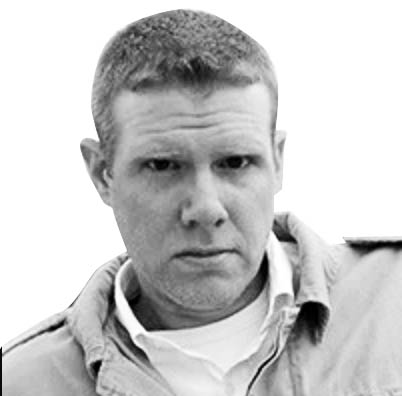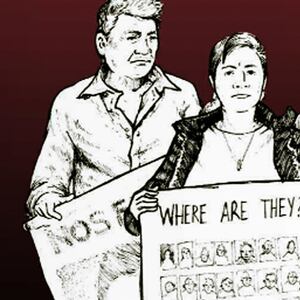CALI, Colombia—I first traveled to the town of Iguala, in Mexico’s southern Guerrero state, not long after the infamous events of Sept. 26, 2014. Forty-three male college students had vanished that night, and rumors were rampant that military and police officers collaborated with a gang of drug traffickers to pull off their disappearance.
The facades of the sunbaked buildings downtown were still scarred by bullet holes and shattered windows, and residents were terrified of reprisals for speaking out. Some whispered of how they had seen students fleeing as cops fired on them. Others said they had seen soldiers from the nearby military base in the streets when and where the young men were abducted.
The phrase locals used to describe what happened to the missing was and is “Se fueron levantados”—they were taken up. But who had taken them? And why?
ADVERTISEMENT
Now, six long years later, the Mexican government claims answers are on the way. Last Saturday, on the anniversary of the students’ disappearance, President Andrés Manuel López Obrador [often known as AMLO] and his top prosecutors announced that more than two dozen arrest warrants had been issued in the case. Some of those now sought are military and police officers, even one of the nation’s highest ranking federal investigators.
Past warrants led to some arrests—including members of the Guerreros Unidos crime group and the mayor of Iguala—but the government’s previous version of events has since been discredited amid accusations of a cover-up. The Inter-American Commission on Human Rights rejected its findings, and members of the U.S. Congress continue to call for “truth and justice” in joint statements. Meanwhile, despite years of searching, only a few small bone fragments belonging to just two different victims have been found and identified using DNA analysis.
But all of that was yesterday’s news. The crimes and deceptions had happened under the allegedly corrupt administration of the previous Mexican president, Enrique Peña Nieto. AMLO, on the other hand, had appointed a truth commission in 2018 and promised new results. He vowed that justice was about to be served.
“Those who prove to have participated will be tried, there will be no cover-up,” he said during a press conference with the victims’ parents on this year’s anniversary, and went on to swear that there would be no impunity granted.
“The truth, the authentic truth, has to be known,” AMLO said.
For the parents of the “levantados” AMLO’s bold words offer new and cautious hope.
“Today with that new government and the will of the president to get to the truth, we have made a little progress,” said Felipe de la Cruz, a spokesperson for the families, in a phone interview with The Daily Beast.
“We want to believe that soon we will have results. And that the pact of silence which has prevailed until today and denied us the truth will be broken.”
“The Greatest Cover-up in Mexican History”
Those behind that pact of silence appear to have included a diverse and far-reaching array of officials who lied about their own involvement in the crime and also tortured witnesses to induce false confessions.
“This is the greatest cover-up in the history of Mexican criminal justice” and “a massive stain on the government,” Mike Vigil, the DEA’s former chief of international operations, told The Daily Beast. “There's never been a massacre that Mexican [authorities] have gone out of their way to cover up at all levels: local, state, and federal.”
According to Maureen Meyer, the Mexico director for the Washington Office on Latin America, AMLO’s new arrest orders mark “the first time that real progress has been made” in the case.
“The importance of these new warrants is that they involve security forces from the state and federal level, including soldiers,” Meyers said.
Prosecutors also indicated the new warrants included capture orders for accused drug traffickers, bolstering suspicions that officers in Iguala were in league with local gangsters.
“This case reflects the broader problem of collusion between organized criminal groups and security forces that has resulted in violence and grave human rights violations in Mexico,” Meyers said. “It points to the depth of the problem of corruption in Mexico and the fact that as long as government officials are able to escape prosecution the country will continue to be impacted by violence, insecurity and abuse.”
Former DEA chief Vigil, who spent more than a decade stationed in Mexico, called such collusion a “perfect storm that disintegrates the rule of law.” Vigil also said that a perceived need to shield the armed forces from accusations of conspiring with organized crime had helped drive the cover up.
“The Mexican military has always been held up on a pedestal, because to the government [the army] is sacrosanct. They've always touted it as an entity that is incorruptible, although in fact that’s not true. And the federal police were also involved. So the government decided to cover it up” to save face, Vigil said.
Most of the students came from humble backgrounds, a factor which also emboldened authorities to whitewash the case.
“If you are the Mexican government, who do you want to protect? Are you going to look out for the institutions and the politicians?—or the sons of poor families?”
The most egregiously corrupt official named in the new slate of warrants was also the most powerful. Tomás Zerón was the previous head of the Criminal Investigation Agency [AIC]—similar to the FBI in the U.S. Upon being accused of torturing witnesses and other crimes by AMLO’s truth commission he promptly fled the country. Zerón went first to Canada and then to Israel, but not before he’d embezzled more than one billion pesos in government funds.
As an analogy, Vigil likened that to former FBI Director James Comey stealing $44 million from Republican Party coffers before jumping the border on the run.
Mexico has petitioned for Zerón’s extradition, with Attorney General Alejandro Gertz Manero saying he was confident Israel would agree because “its authorities know very well what human rights violations mean and the responsibilities that executioners and torturers [must face],” according to Mexico News Daily.
“A Coordinated Attack”
Much of the mystery surrounding the students’ disappearance centers on both motive and method. It remains unclear why they were taken, and what could have prompted such violence.
Students had been traveling to Mexico City that night from the campus of a teachers’ college called Ayotzinapa. Ironically, they had been on their way to take part in protest marches to commemorate the anniversary of another government massacre of hundreds of demonstrators in 1968. Upon arriving in Iguala, the would-be protesters commandeered several buses to take them the rest of the way to the capital, as the “borrowing” of such buses is a long-standing tradition for Ayotzinapa undergrads.
And that’s where the story gets twisted.
The discredited version of events put forth by then-AIC chief Zerón is that the Guerreros Unidos drug gang mistook the students for rival narcos, slaughtered them with the help of local cops, and burned the bodies in a trash pit on the outside of town.
Since then, others have suggested that the students had staged a rally in Iguala to disrupt a political event that night, at which point they were swept up in a crackdown ordered by former mayor José Luis Abarca. And still another theory alleges that one or more of the buses the students had helped themselves to was pre-loaded with heroin belonging to the Guerreros Unidos, who killed them to recover their stash.
Vigil, who has also written multiple books about his experiences with the DEA, said there were problems with all of these narratives. The charges that Iguala mayor Abarca was the “mastermind” of the crime—charges brought by prosecutors as part of the tainted probe under the Nieto administration—appear shaky, Vigil said. And a drug gang would be unlikely to leave a valuable cargo of contraband unattended on an empty bus, or to mistake a group of unarmed students for an outsider faction.
One possible scenario is that the police were alerted to the theft of the buses and confronted the students with “overzealous” and ultimately lethal force.
“The indications are that one of the police commanders gave the order to start shooting at the buses,” Vigil said, at which point members of the 27t Infantry Battalion, stationed about a mile from the crime scene, may have joined in. After that, the bodies of the slain students were likely turned over to members of the Guerreros Unidos for disposal. Rather than being burned in a dump, they would more likely be buried out in the desert, as that is part of the gang’s M.O.
“The Guerreros Unidos have turned the outskirts of Iguala into a massive cemetery,” he said.
In addition to those of the Ayotzinapa students, more than 300 other families have come forward to say their loved ones have vanished in the area, and searches since 2014 turned up dozens of corpses in mass graves.
The evidence so far may be circumstantial, but it does not appear the chain of events were haphazard or random.
“The multiple attacks against the students and passenger buses over several hours makes clear that this was a coordinated attack involving many actors, including [gang] members and several municipal police forces,” said WOLA director Meyers.
“Intellectual Authors of This Crime” Still on the Loose
On the day that he announced the new warrants, attorney general Gertz Manero also said that the death toll from the attacks that night was much higher than previously known:
“Nearly 80 people were massacred and hidden in Iguala by the different criminal groups and their official accomplices,” he said, but did not elaborate on who the additional 37 victims were.
“The new revelations by Mexican authorities about this number of victims point to just how complicated this case really is and the challenges that remain to clarify what happened to the 43 students and why, and to discover their whereabouts,” WOLA’s Meyers said.
That lack of forensic evidence and a firm motive for the crime also signaled to Vigil that AMLO’s truth commission will have plenty of hard work ahead.
“I remain hopeful, but there is reason for some skepticism. It’s easy to generate arrests, but much more difficult to consummate a successful prosecution for murder without witnesses or the recovered bodies,” Vigil said. “The use of torture to elicit confessions displays the desperation of the government to come up with scapegoats.”
De la Cruz, the spokesperson for the 43 families, said they won’t be satisfied with anything less than a firm resolution to the case.
“The intellectual and material authors of this crime must be brought to justice,” he said. “We’re grateful for all that’s been done so far, but it’s still not enough. We can’t rest until we know what really happened to our sons, and where they are now.”







